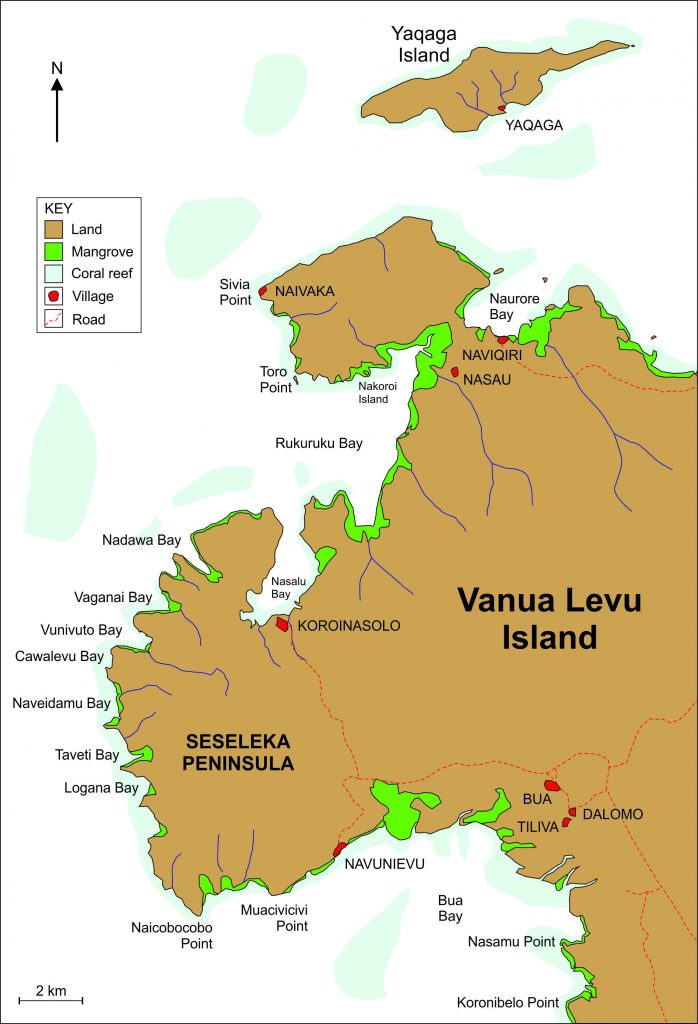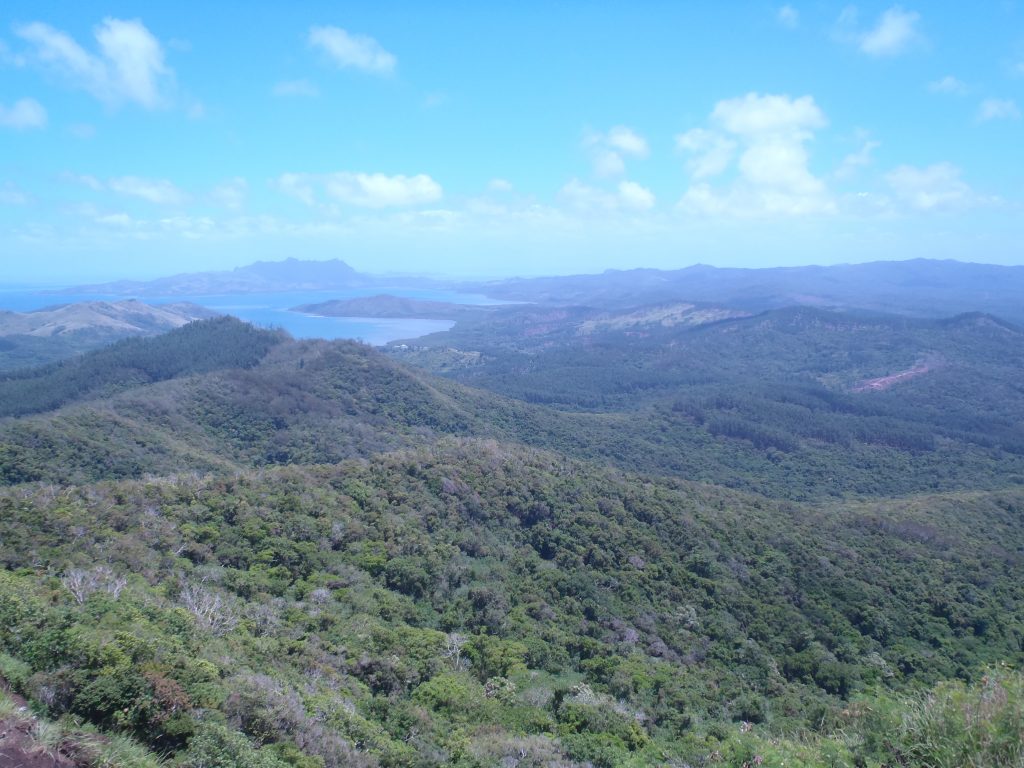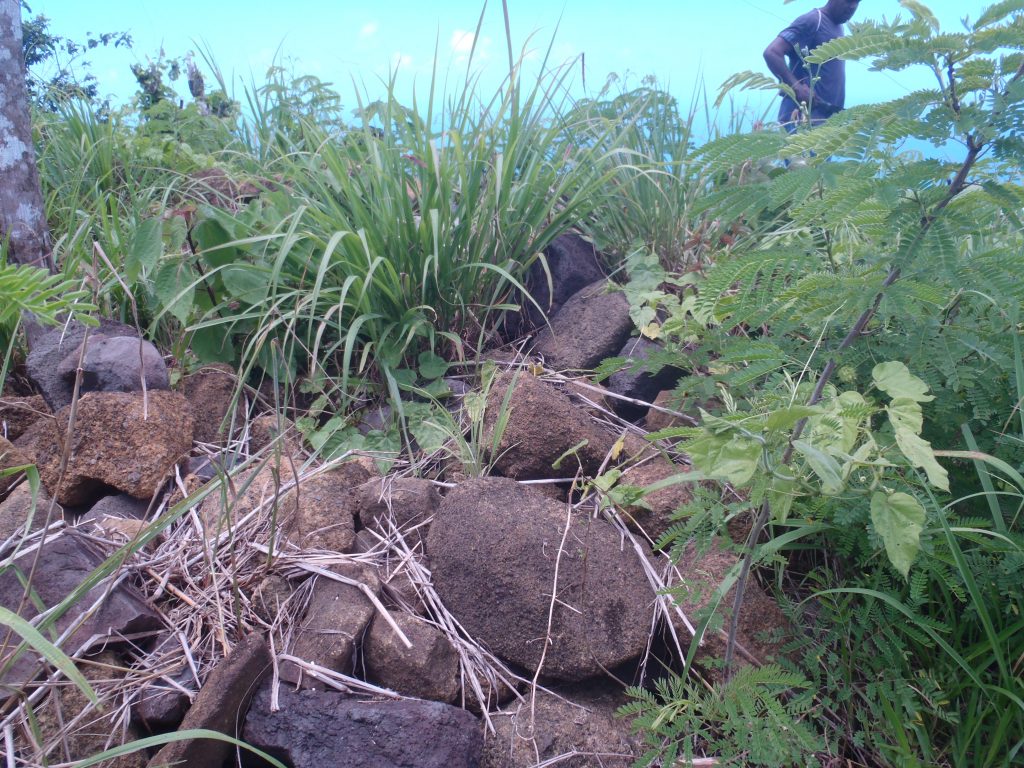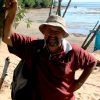Climate Wars
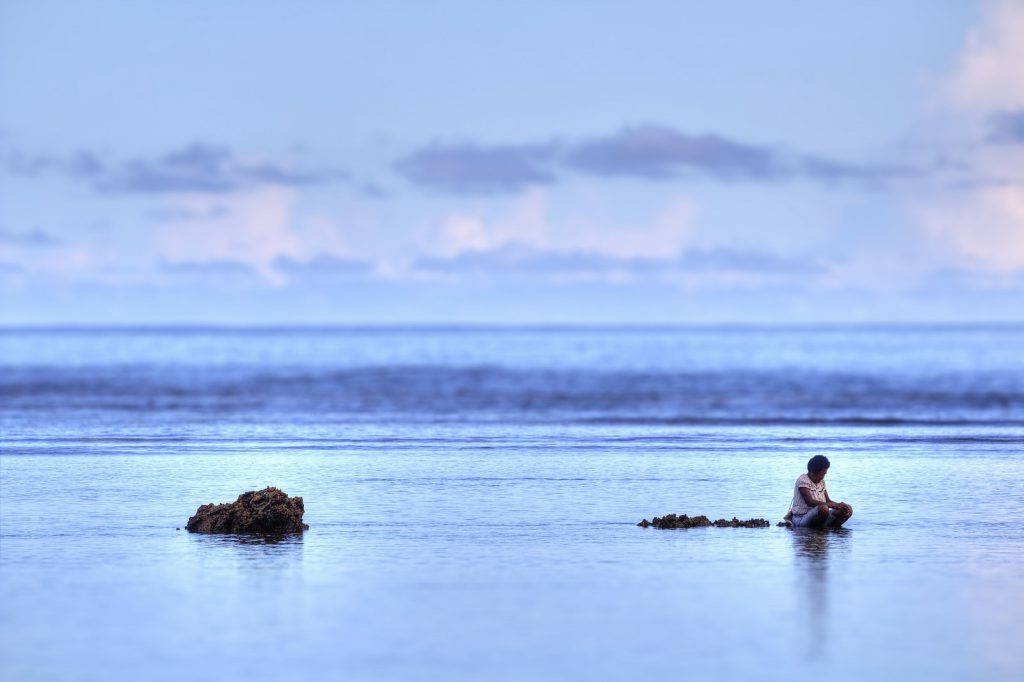
From where the rattly pickup truck dropped us, it took nearly three hours to reach the summit of Seseleka, a mountain on the island of Vanua Levu in Fiji. The lower part of the climb took us through pine forests, then into less dense woodland on steeper slopes, made slippery by recent rain. The track was an elevated pathway following a narrow ridgeline that fell away steeply on either side; called tua, such pathways were once the main lines of communication on these mountainous islands.
The first signs of fortification made me forget my fatigue. There was a pile of rocks, roughly oval-shaped, representing a yavu, or house foundation. Its position made clear it was a guardhouse, intended to check the advance of unwanted visitors to the mountaintop community. There were more guardhouses at regular intervals, and then, across the ridge, the remains of stone walls and defensive ditches. When functional 200 years or more ago, these ditches likely featured rows of sharpened sticks—designed to skewer would-be aggressors—protruding from their bases.
Abruptly, trees gave way to bare rock, sheer faces up which we scrambled indelicately, buffeted by the winds that suddenly hit us. The top of Seseleka, at 1,400 feet above sea level, is flat, roughly four times the size of a U.S. football field, and almost entirely fringed by sheer cliffs. There are a few stunted trees, a rock-lined pond (my guides used the Fijian word tobu, which means “well,” suggesting it is artificial), and the remains of perhaps 20 house platforms. Most of these are large enough to have been residential, but a few smaller ones on the highest parts of the mountaintop were probably lookout posts. The views in every direction are stunning, although when people lived atop Seseleka, they probably valued the site more for pragmatic reasons—namely, to build hillforts (fortified settlements built atop hills or mountains). For the little-known “hillfort period” of Fiji’s history, from about A.D. 1400 to 1850, was a time of conflict throughout this and most other tropical Pacific island groups.
If you have ever visited Fiji, chances are you spent most of your time on the coast. And why wouldn’t you? Ever since people first reached these remote islands around 3,100 years ago, they have favored coastal locations and food resources. Ten years ago, my research team discovered what are Fiji’s earliest-known settlements, in the southwest part of the largest island. To our astonishment, when we excavated we found numerous postholes—showing that, during the earliest period of settlement, people were living not directly on the land but in houses built on stilt platforms stretching out across the fringing coral reef. From the evidence they left behind, we infer they ate their fill of shellfish, fish, turtles, and many reef-surface foods. To judge from the time some of these people must have spent manufacturing intricately decorated pottery and shell jewelry, acquiring food must have been comparatively easy.
The relative abundance of food in coastal areas, both onshore and offshore, meant that almost everyone in Fiji lived close to the sea from the time of first settlement 3,100 years ago until about 600 years ago—when, suddenly, everything changed profoundly. Within a couple of generations, most coastal settlements in Fiji appear to have been abandoned in favor of new ones in upland, inland locations. Many of these were fortified, probably in response to the outbreak of warfare. Settlements shifted and conflict erupted in almost all Pacific island groups at about the same time, pointing to a region-wide trigger rather than a series of unconnected local ones. In island worlds, sea-level change—because of its intimate links with coastal-food availability—provides just such a trigger, and it is likely that the fall of sea level between about A.D. 1250 and 1350 in the Pacific was behind this calamitous societal response. If so, this demonstrates that in the past, island peoples were disproportionately exposed to climate change, just as many scientists say they will be in the imminent future. Through sea-level fall and its effects on coastal-food availability, climate change upended Fijian society within a few generations.
Fiji’s hillforts are called koronivalu (literally, “war towns”). Recent field surveys have focused on the remote western part of Vanua Levu, the second largest island in the archipelago. This was one of the first areas to be regularly visited by Europeans, who came to trade for sandalwood and bêche-de-mer (sea cucumber) and left a number of written descriptions of the hillforts. The earliest account dates from 1808, but it was Commodore Wilkes of the United States Exploring Expedition who in the 1840s noted that there was “a town perched on the very top” of Seseleka. There were others around as well.
With a common focus on geoarchaeology, my team and I have been working on reconstructing ancient sites and environments in the Fiji Islands for more than 15 years. For all this time, the core team has included a geographer (myself), a geologist, and an archaeologist. Over the course of two weeks in January, we identified and mapped five hillforts in the area, and local residents told us stories of many more. We are heading back to the Seseleka area in July to uncover more of its lost history.
There is a rich vein of oral tradition in Fiji, and it includes stories about hillforts. We heard stories about when Seseleka was last besieged—perhaps in the 1860s. At that time, most combatants had recently converted to Christianity, so hostilities ceased on Sundays, allowing the occupants of the Seseleka hillfort to scurry down to the sea, fill their pots with shellfish and other seafood, and retreat uphill ready to fight again on Monday with a full stomach. (Not surprisingly, this is said to have prolonged the siege.) The remains of broken pots and edible shellfish scattered across the summit testify to this scenario. Through our excavations on the top of Seseleka, we discovered the remains of the earliest shellfish that were consumed there. Using radiocarbon dating, we plan to determine the age of these shellfish remains and thus the time when people first established this hillfort.
Another clue as to the function of Seseleka lies in its name. Sese means “to run away, depart, perhaps to flee (from danger),” while leka means “narrow”—a narrow place. So the name Seseleka may recall a time when people fled upslope to a place accessible only along a narrow path. Other upland place names in the area can be interpreted the same way. For example, a rock passage connecting two hillforts on a ridgeline is named Osoabukete, meaning that someone who is pregnant cannot squeeze through.
Seseleka is one of perhaps a hundred or more hillforts in the Fiji Islands. A Fiji colonial officer in the late 19th century considered hillforts ubiquitous: “Almost every important hilltop in western Viti Levu [island] is crowned with an entrenchment of some kind,” he wrote. Why were they established? The likeliest explanation is climate change.
In the Pacific in the year A.D. 1200, the climate had been warming and sea level (ever the close companion of temperature) had been rising for several hundred years. Given that coastal settlements were relatively easy to move, sea-level rise at that time was not the stressor on human livelihoods that it is today. In addition, seasons were regular and predictable, and throughout most of the Pacific Islands region, societies were burgeoning, populations were growing, and hierarchies were emerging. Then, between about A.D. 1250 and 1350—during what’s called the A.D. 1300 Event—the climate cooled rapidly and sea level fell. The latter was key.
Imagine you are living on a smallish island in the middle of the Pacific. You live on the coast, you grow crops on the fertile, well-watered coastal plain, and you supplement your diet with food from the adjacent coral reef and lagoon. Then sea level falls, perhaps by 20–30 inches. Your crops wither because the water table within the coastal plain has dropped by the same amount, and their roots prove too short. The surface of the coral reef—its most productive part—becomes permanently exposed, and everything living on it dies. The lagoon bounded by the reef becomes murky because water circulation is restricted, and most living things that once thrived in it no longer do so.
Read more from the archives: “How to Make Climate Change Feel Real.”
At the end of the period of sea-level fall, the food available to you in what was once your coastal idyll has decreased by 80 percent. What do you do? History suggests that you try to grab what your neighbors have, and that, when they resist, you try to kill them. Where no other options remain, conflict becomes habitual and you have to leave your coastal location—because it has no natural defenses—and move somewhere that can be fortified.
And this seems to be the likely explanation for the establishment of Fiji’s hillforts. Sea-level fall (driven by cooling) during the A.D. 1300 Event—an event that led up to the little ice age—caused a rapid and enduring food crisis along Fiji’s coasts that resulted in conflict and the movement of people into the hills, where they remained for several hundred years.
Little is known today about the hillforts, which is the main motivation for our research project, a collaboration between the Fiji Museum, the University of the South Pacific, and the University of the Sunshine Coast (Australia). We think Fijians have a right to know about this period of Fiji’s history. Yet they know very little about it, because of what happened around the time hillforts were finally abandoned in the mid-19th century. By all accounts, it was a perfect storm.
By the start of the 19th century, coastal resources had recovered from the effects of the A.D. 1300 sea-level fall, thereby removing one of the main reasons for the conflict. In fact, many of the earliest written accounts of fighting in Fiji and other Pacific island groups noted its by-then ritualized nature: lots of rude language, many feints and bluff attacks, but relatively few casualties.
Then Europeans arrived on Fiji’s shores, inadvertently introducing diseases like measles and influenza, which the Indigenous people had never before experienced. Their lack of resistance led to epidemics; on some islands, it has been estimated that around 80 percent of the Indigenous people died as a result. Entire villages were abandoned, giving European settlers the notion that the country was nearly empty, which encouraged land “purchases” for negligible amounts. The remaining Indigenous people questioned their traditional belief systems, leaving the path clear for Christian missionaries to convert almost everyone within a few decades. Fijians were taught to forget their “heathen” past, especially the time most recent in their minds, which was the period of conflict manifested by the hillfort period. And that is why hardly anyone remembers anything about it today.
There is strong evidence linking the profound societal changes that occurred at the start of Fiji’s hillfort period to climate change. But only solid chronologies of climate change and societal change from places like Seseleka can ultimately prove that past human societies in island countries like Fiji were fundamentally and involuntarily reconfigured by climate change. What happened then is similar to what many people—residents and scientists alike—observe happening on Pacific islands today. Sea level is rising, inundating coastal settlements and their food gardens, leading to any number of doomsday scenarios for the future.
There is no question that island societies are unusually exposed to the manifestations of climate change, especially sea-level change. In our presently globalized world, it is unlikely that “adaptation” will involve conflict so severe that people will need to rebuild and occupy hillforts. Yet the ruins stand today, craggy sentinels towering over the people of the lowlands, stark reminders of the fragility of life on islands in the middle of the world’s oceans.
This article was republished on Slate.































